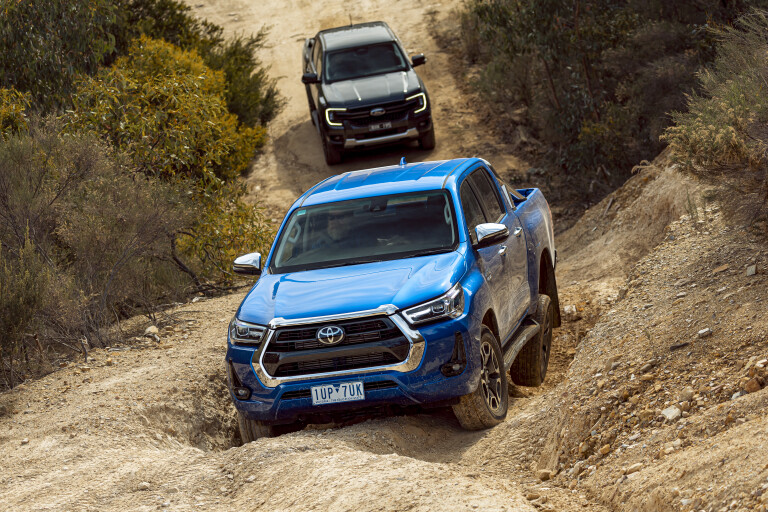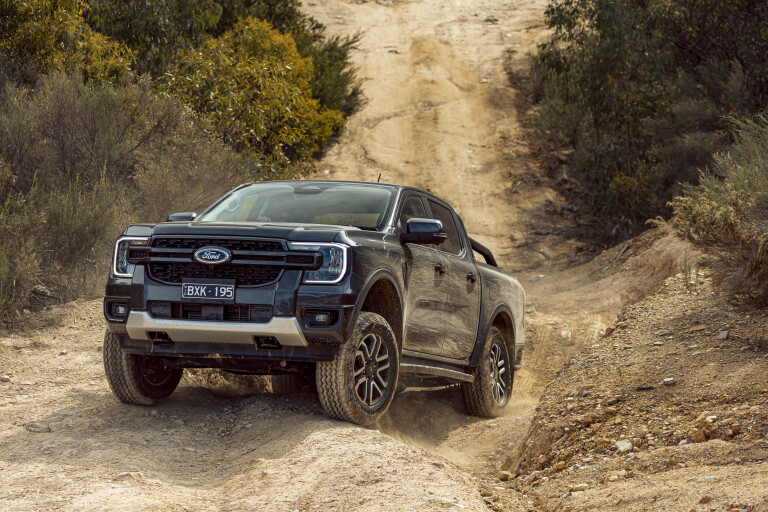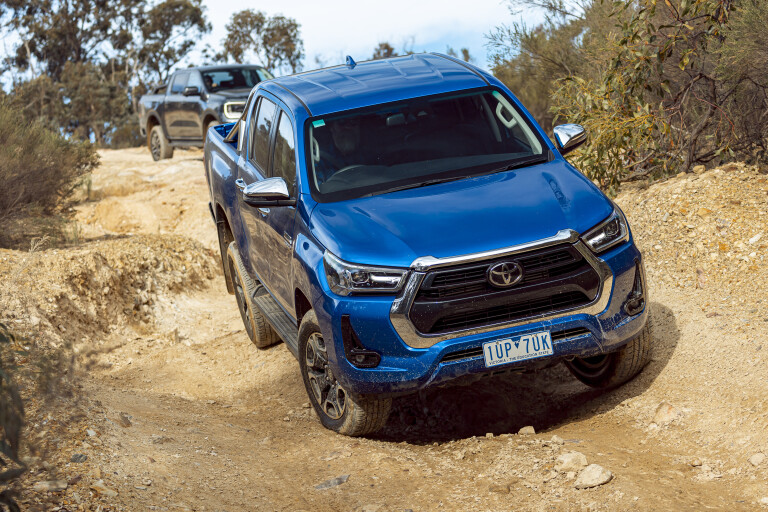
Don’t look now Hilux, but the Ranger now has full-time 4x4. Although – fortunately for you – only on V6 models, so for the time being you’re off the hook. But the clock is ticking.
Part-time 4x4 just doesn’t cut the mustard if you want the best. Just look across the showroom to your stablemate LandCruiser, Toyota’s premium 4x4.
To be totally fair, there’s nothing particularly wrong with part-time 4x4. It does the job and it’s been doing the job since day one. And, compared to full-time 4x4 it has less moving parts, and less parts moving much of the time. But it’s still inferior to full-time 4x4 in the critical measures of safety, driveability and user friendliness.

Of the mainstream utes up until the 2022 Ranger, only the Amarok and the Triton have offered full-time 4x4. With the Amarok, it’s then only with the eight-speed automatic gearbox and with a single-speed transfer case (not that it needs low range thanks to its cleverly tweaked torque convertor), while only up-spec Triton models offer full-time 4x4 via their unusual ‘Super Select’ transfer case (a copy of Jeep’s Selec-Trac system) that also offers rear-wheel drive only.
The essential mechanical difference between part-time 4x4 and full-time 4x4 is full-time 4x4 requires a third and centre differential, whereas part-time 4x4 has just the two axle differentials.
The centre differential of a full-time system allows all four wheels to be driven all the time even on high-traction surfaces. Do that with a part-time 4x4 system for long enough and you’ll break it.
It’s far better to have all four wheels driven if there’s a quick and unexpected change in available traction
Having all four wheels driven all the time means there’s no thinking “should I engage 4WD now or is 2WD okay” as the driving environment changes and traction conditions deteriorate.
This is not as simple as being ‘on road’ or ‘off road’ as there’s a full and continuous spectrum of driving environments where the infinite variables of weather meet the infinite variables of road surface.
In all that mix, the benefit of full-time 4x4 over part-time 4x4 is most commonly enjoyed on wet bitumen or concrete roads, but the benefit obviously extends through to any sort of unsealed road as well, more so if it’s wet. For towing in the wet, full-time 4x4 is no-brainer benefit.
In a part-time 4x4, when a road is wet enough to be genuinely slippery you can engage 4x4 without fear of damaging the transfer case but that’s a crucial decision to make just at the time when you are best concentrating on the road!

Experienced and confident drivers may not see this as an issue, but not everyone is so blessed. And even if you’re an experienced driver, it’s far better to have all four wheels driven if there’s a quick and unexpected change in available traction such as water run-off across the apex of a blind mountain sealed-road corner or a notably slippery patch in an otherwise good traction unsealed road.
Part-time 4x4 also has an inherent design compromise in as much as rear drivetrain components (driveshaft, diff and axles) have to be built strong enough to take 100 per cent of the engine’s torque output, whereas with a full-time system these components can be made with 50 per cent less strength, and therefore lighter, and still be as comfortable in handling the engine’s output.
Given the components in question all contribute to the unsprung mass, a reduction in weight here provides critical benefits in handling and ride quality – especially on rougher and bumpier roads – something not lost on Charles Spencer King when he designed the original Range Rover (in 1970) complete with its game-changing full-time 4x4. Optimising the steering geometry of a 4x4 that can either drive just the rear wheels or all four wheels also means a compromise.

Interestingly in its PR on the new Ranger, Ford doesn’t promote the V6’s full-time 4x4 as hard as you may think it might … perhaps as the four-cylinder Rangers are still part-time 4x4?
As for Toyota and its Hilux, the good news is full-time 4x4 is as close as the nearest Prado, with which it already shares many key components. And in key ways, the Prado’s full-time 4x4 system is superior to the new Ranger’s.
It’s simpler (mechanical centre differential rather than an electronic clutch centre differential) and doesn’t bother with a 2WD option, which seems more marketing than engineering good sense on Ford’s behalf.

COMMENTS